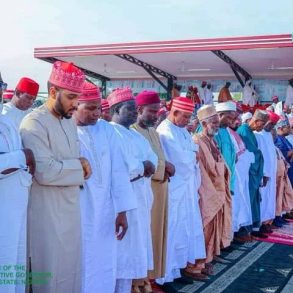International Youth Day 2025 — Youth Advancing Multilateral Cooperation Through Technology and Partnerships
By Tobi Akinnubi
August 12, 2025
The world is watching a generation take the lead. On August 12, 2025, International Youth Day spotlights a new reality: young people are not waiting at the edges of diplomacy and development, they are designing the tools, building the networks, and forging the partnerships that will define how nations cooperate in the 21st century. Established by the United Nations in 1999, International Youth Day has grown from a commemoration into a global platform for youth-led solutions and cross-border solidarity.
This year’s theme: “Youth Advancing Multilateral Cooperation Through Technology and Partnerships” is not a slogan. It’s a roadmap. The UN’s concept note for 2025 frames the moment as one in which technology and strategic partnerships can dramatically expand youth participation in policy, peacebuilding, climate action, public health and civic life. From regional coalitions of civic tech innovators to youth-driven platforms that track climate risks in real time, young people are already reshaping how the world solves shared problems.
WHERE THE WORLD IS TUNING IN AND WHY IT MATTERS
The global observance for International Youth Day 2025 is being convened in Nairobi, Kenya, in collaboration with UN‑Habitat, a deliberate choice that puts urban youth, digital access, and cross-border partnerships at the heart of the conversation. Events in Nairobi and virtual hubs across the globe are designed to be practical: showcasing youth-led solutions, offering policy dialogues, and connecting funders with grassroots innovators.
The urgency behind this push is demographic: there are roughly 1.2 billion young people aged 15–24 worldwide; a cohort whose sheer scale gives them huge potential to influence markets, politics and global norms if given the right platforms and investments. Empowered by smartphones, social networks and low-cost digital tools, this generation can multiply impact in ways previous generations could not have imagined.
WHAT TECHNOLOGY + PARTNERSHIPS LOOKS LIKE IN PRACTICE
The concept note and early programme briefs for IYD 2025 point to concrete examples where youth, tech and partnership converge: open-access flood‑resilience dashboards that fuse community sensors with satellite data; digital civic platforms that allow cross-border collaboration on human-rights reporting; and youth-led public-health surveillance tools that help detect local outbreaks faster and more inclusively. Those are not theoretical, they’re being field-tested by networks of young innovators, NGOs, municipal governments, and UN agencies.
Partnerships matter because technology alone is not enough. Tech needs governance, scaling support, capacity-building, and equitable access. That means universities, private sector players, philanthropic donors, and international institutions must work with not merely for youth groups. In practice this can look like multi-stakeholder incubators, matched‑funding for local tech labs, or treaty-level youth consultative mechanisms that feed into multilateral negotiations.
THE CHALLENGES: EQUITY, TRUST AND INFRASTRUCTURE
If technology is the engine, access and inclusion are the fuel. Digital divides (between and within countries), data privacy concerns, the risk of algorithmic bias, and uneven funding are real constraints. Young people from marginalized backgrounds often face barriers to the very platforms they are asked to use as amplifiers. Closing that gap requires targeted investment in connectivity, digital literacy, and governance frameworks that protect rights while enabling collaboration.
Equally important is rebuilding trust in institutions. Youth movements are often skeptical of top-down multilateralism but the most effective models blend grassroots legitimacy with institutional reach. International Youth Day 2025 seeks to demonstrate how that hybrid can work.
A PLAYBOOK FOR ACTORS WHO WANT TO MOVE FROM WORDS TO WINS
For governments: create co‑design mechanisms that put youth representatives at the table for digital policy and urban planning. Fund regional digital public goods and prioritize open data platforms that young developers can build on.
For the private sector: partner with youth-led labs for responsible product testing, offer mentorship and open APIs, and commit early-stage funding to scaleablesolutions.
For donors and multilateral institutions: de-risk youth innovation by matching small grants, helping teams navigate procurement, and supporting long-term capacity building rather than one-off pilots.
For young people: keep building, codifying lessons, and linking local successes into transnational networks — your regional experiment can become the model for global policy.
CLOSING: NOT A FUTURE TENSE, A PRESENT ACTION
International Youth Day 2025 is not a distant aspiration. It’s a working demonstration that when young people have tools, partners, and power, multilateral cooperation becomes faster, fairer, and more creative. If policymakers, funders, and tech leaders hand them the levers and the protections the outcomes will follow. Today’s youth are not just inheriting the system; they’re redesigning it. That’s the story the world should amplify loudly, clearly, and without hesitation.






